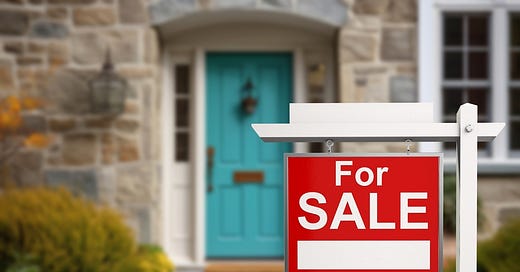A young millennial recently made an offer to purchase a larger home in his same neighborhood. He and his partner planned to rent their current home and move into the larger one.
But, a second offer that came in that was higher than theirs. The seller took the higher offer.
“I don’t feel that bad about it,” the 32-year old buyer said. “The purchase price was above what we were willing to pay for it.”
That kind of level-headed thinking has been in short supply during this latest runup in prices. We’ve watched desperate buyers make astounding offers in multiple bid situations. They assume they will live in that property forever, so talk themselves into being okay with overpaying now just to get into a house.
Thinking like that – and believing that this time will be different – got a lot of people into trouble during the housing crisis some 16 years ago. Housing prices rose like the proverbial hockey stick, even as lenders stopped verifying income. Stated income loans allowed people earning $50,000 per year to buy $500,000 homes, a debt-to-income ratio that was clearly unaffordable, even with interest rates at sub 4 percent, let alone the 7 percent neighborhood in which they inhabit today. But if your credit score was high enough, the lender would push the loan through.
The bet many buyers were making then was to buy, fix and flip the house, a plan that worked beautifully until it didn’t. Others bought a larger home that was right on the edge of what they could afford. When people suddenly lost their jobs, they couldn’t make the numbers work. Millions of homeowners lost their properties to foreclosure or short sales. It took years longer than expected for the housing market to restart.
But you can’t say that the housing market ever regained its former glory. Not when only 4 million homes are being sold today. And, now we find ourselves in a similar place to 17 years ago, where economic uncertainty is causing people to step back further. Redfin recently reported that the U.S. housing market has nearly 500,000 more sellers than buyers, the most since 2013, when the company began keeping track. They expect this turn toward a buyer’s market will likely cause home prices to fall. In fact, that’s already happening, with home prices falling in 11 of the 50 most populated metro areas.
Meanwhile, in the Realtor.com May Monthly Housing Trends Report, U.S. housing inventory surpassed 1 million homes for the first time since 2019. Key findings include:
The inventory of homes for sale rose 30.1% year-over-year, marking the 19th consecutive month of inventory growth. May 2025 inventory hit a new post-pandemic high, but remains about 14% below pre-pandemic levels.
The total number of unsold homes, including those under contract, was up 19.9% compared to last year.
Pending home sales- homes under contract- fell 2.6% compared to last year, as a renewed climb in mortgage rates weighed on buyers.
Newly listed homes increased 9.6% from a year ago.
Homes spent a median of 51 days on the market, six more than a year ago, but about the same level as pre-pandemic norms for May.
The national median list price for homes was $439,950, about flat since last year, while the price per square foot rose 0.7%, consistent with very modest home value growth.
Price cuts were reported on 19% of listings – the highest share for any May since at least 2016 and the fifth consecutive month with growing price reductions.
What’s happening is there is less competition for the increasing number of homes that are listed. Fewer home buyers are making offers. Various surveys report that buyers are waiting on the sidelines, hoping all of the economic uncertainty fades away and their buyer power increases. In late May, the National Association of Realtors reported that pending home sales decreased 6.3 percent in April. Lawrence Yun, NAR chief economist, said the decline in the number of pending sales was due to higher mortgage rates depressing home sales.
Lowering mortgage rates won’t automatically fix everything. It won’t get new homes built quickly or inexpensively. It takes time to assemble and acquire land parcels, get designs done and go through the permitting process, hire builders, buy materials, and start construction.
Here’s what it will do: It will heat up competition for existing homes and continue to push up prices in some hot markets. That might be good for some sellers. But it’s bad for buyers, who are already having trouble believing that their dreams of homeownership will ever come true, and it won’t create a sustainable, balanced housing market.
And, just to sum it all up, these are very clear signals that a shift is starting in housing. What I don’t know (and neither do the housing economists), is which way it will tip.
Thanks for reading. Type to you again, soon.
Ilyce
For more of my thoughts about real estate, check out ThinkGlink.com.




Problem is if I wanna move and buy a similar $500k house new, it’s $800k. So why sell?
This is just the cycle as always. Rents have also stopped the upward trend and holding this year.